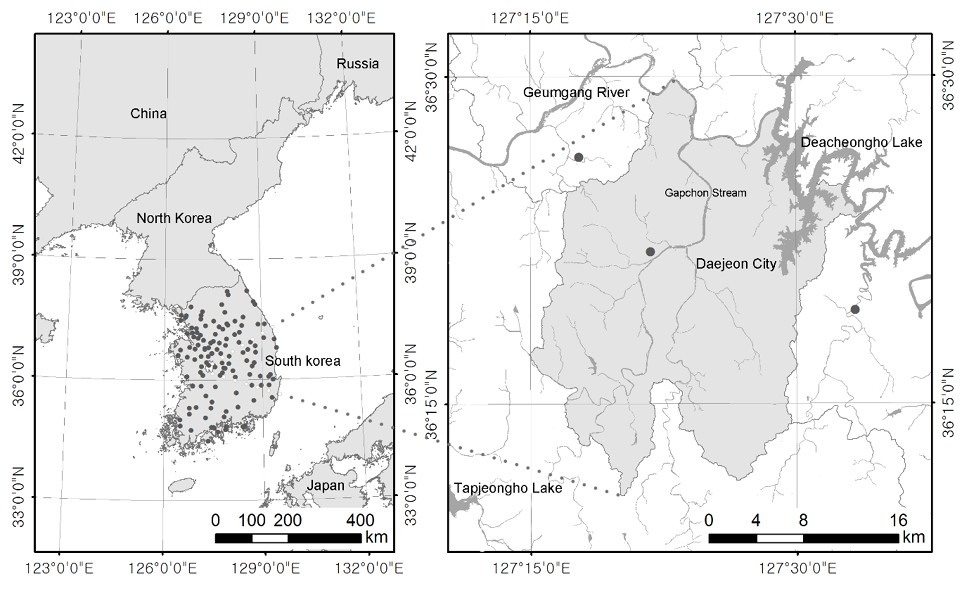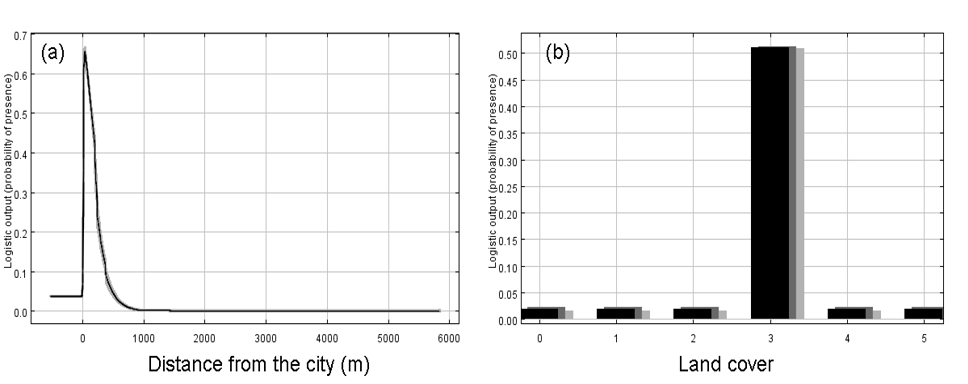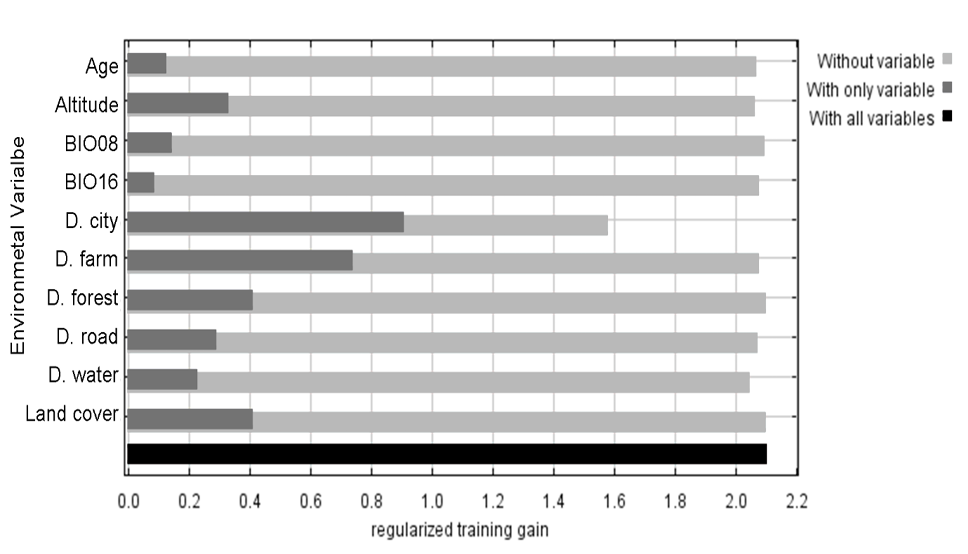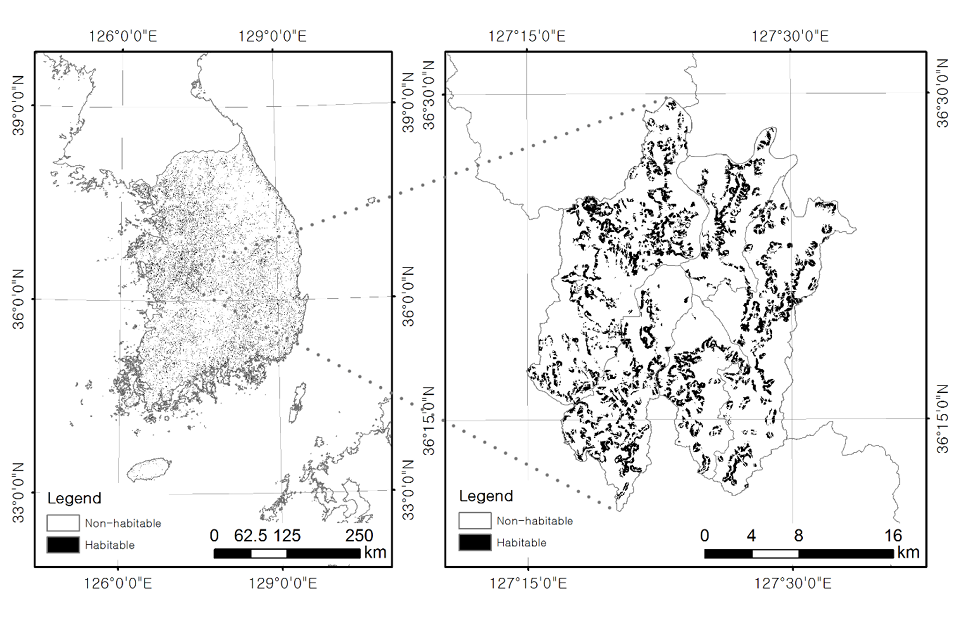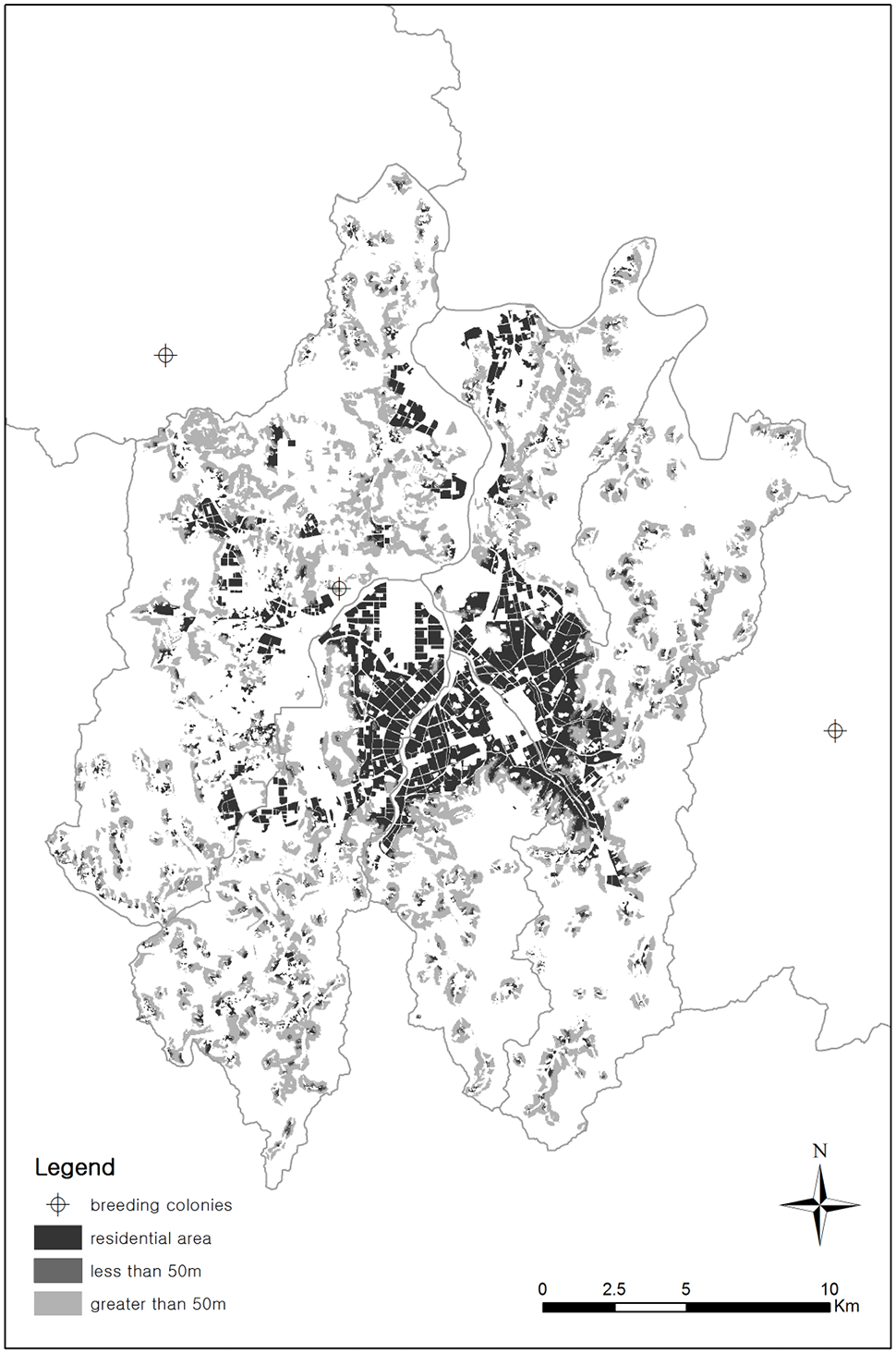Estimating the Potential Habitat of Breeding Egrets and Herons (Family Ardeidae) for Urban Forest Management in Daejeon Metropolitan City, Korea
Estimating the Potential Habitat of Breeding Egrets and Herons (Family Ardeidae) for Urban Forest Management in Daejeon Metropolitan City, Korea
Man-Seok Shin1, Hyun-Ju Cho2 and Eun-Jae Lee3*
Location of the study area and 126 breeding colonies of egrets and herons in South Korea.
Response curves showing the relationships between the probability of breeding colonies of egrets and herons and two top habitat variables (Distance from the city, Land cover). The curves show the mean response of the 10 replicate model runs (black) and the mean +/- one standard deviation (light gray, two shades for Land cover variables).
The results of the jackknife test of variable importance. Values shown are averages over 10 replicate runs.
Maps for displaying the probability and prediction of breeding egrets and herons by MaxEnt in Daejeon, South Korea.
Distribution of the potential habitat for breeding egrets and herons less than and greater than 50m from residential areas in Daejeon, South Korea.
Pearson’s correlations on a paired habitat variables.







